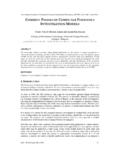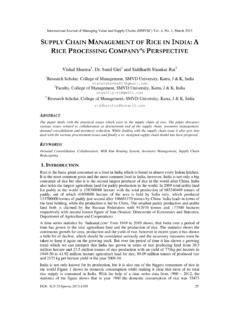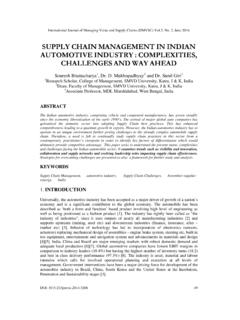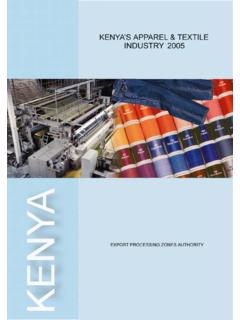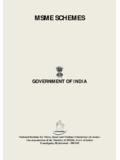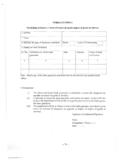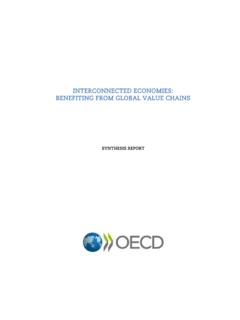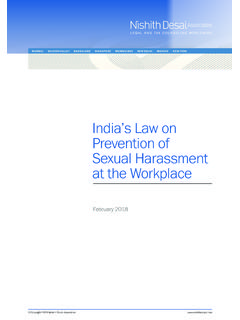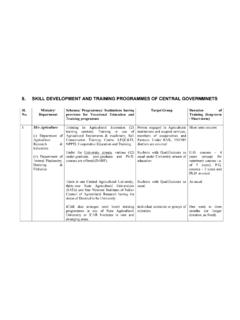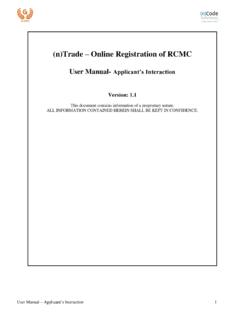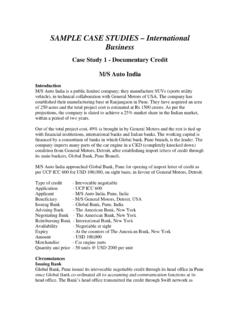Transcription of DYNAMICS OF GARMENT SUPPLY CHAIN
1 International Journal of Managing Value and SUPPLY Chains (IJMVSC) , No. 4, December 2013 DOI: 29 DYNAMICS OF GARMENT SUPPLY CHAIN Dr. Sunil Giri1 and Siddharth Shankar Rai2 1 Associate Professor, Management Development Institute, Murshidabad, West Bengal, India 2 Academic Associate, Indian Institute of Management, Kashipur, India ABSTRACT The purpose of the study is to examine the SUPPLY CHAIN structure of the GARMENT industry in India. Indian GARMENT industry is one of the leading GARMENT industries in the world, which is full of diversities and complexities.
2 The study aims at examining the existing structure of the SUPPLY CHAIN at every level from raw material to the GARMENT production until it reaches to the customer. The study also focuses on investigating the major SUPPLY CHAIN challenges and aims at suggesting the proper SUPPLY CHAIN framework. This is an exploratory research study which examines the structures and various issues concerned at every level of the SUPPLY CHAIN . The study is based on the data available from the secondary sources as well as the review of literature from the available sources. The study finds that the Indian GARMENT industry is facing many SUPPLY CHAIN issues such as inventory management, visibility, lead time, collaboration, technology and logistics which are almost faced by all the companies all over the SUPPLY CHAIN .
3 The companies also vary in their size and are product offerings base on their target customer groups. Study also suggests the appropriate SUPPLY CHAIN strategy for every combination of company type and product offered. KEYWORDS GARMENT Industry, SUPPLY CHAIN management, Quick response, Inventory management, Collaboration, product specific SUPPLY CHAIN , India 1. INTRODUCTION The textile and GARMENT industry is one of the major industries in India having major contribution in GDP of the Economy. Indian textile and GARMENT industry has its significance not only in the Indian market but it has its recognized presence and high stature in the global market also and it is one of the leading textile and GARMENT industries in the world.
4 The structure of the Indian textile and GARMENT industry is full of variability having the players at every level of their SUPPLY CHAIN with lot of structural, operational and performance differences. The industry consists of many organized entities which are highly structured, capital intensive and having most of the brand value in the market as well as the small scale, non-integrated spinning, weaving, finishing, and apparel-making enterprises and handicrafts dominated by the handlooms and power looms. Currently Indian textile Industry contributes about 14% to industrial production 4% to the country s GDP and 17% to country s export earnings.
5 It provides employment to more than 35 million people in the country and is the second largest employment provider sector after agriculture. In the year 2010-11 total production of cloth was 59556 million square meters, out of which 2205 million square meters was produced by the mill sector. International Journal of Managing Value and SUPPLY Chains (IJMVSC) , No. 4, December 2013 30 Although, the Indian GARMENT industry is among the top industries of the sector in the global market, its structure in the Indian conditions is full of diversities and it faces many infrastructural issues and differing structures of players involved at every level.
6 These issues affect the SUPPLY CHAIN of the companies which are already confronting the various SUPPLY CHAIN and logistics related challenges. The basic SUPPLY CHAIN challenges which the GARMENT industry in India is facing are discussed later in the study. These are the challenges which are faced more or less by every company and contributing player in the industry here. SUPPLY CHAIN frameworks are needed to be designed as per the requirements of the particular companies in order to make them more efficient, responsive and competitive. The study first discusses the structure of the GARMENT industry in India, which further describes its challenges based on the study of the available literatures and suggests the suitable SUPPLY CHAIN framework with the appropriate SUPPLY CHAIN strategies according to the company structures and their product offerings.
7 The study here explores many dimensions of the SUPPLY CHAIN in the GARMENT industry in India based on the review of the available literature which will be proved helpful and can be carried on for more descriptive study on the specific issues based on the real data in future. 2. STRUCTURE OF GARMENT SUPPLY CHAIN IN INDIA The GARMENT SUPPLY CHAIN involves the major stages of fiber and yarn production, fabrication, garmenting, distribution and retailing (Sen, 2008; Varukolu and Poaps, 2009; Chaudhry and Hodge, 2012; Wilson, 2001; Fin, 2006).
8 SUPPLY CHAIN structure of GARMENT industry in India comes with lot of varieties of the players involved and their size and operational differences at every stage in the CHAIN . The differences are not only based on the operational and structural variability at different stages difference among the members of two stages, but it also exists among the various counterparts competing at the same stages. Although, the stage wise difference among the players and their operations is obvious and needs the thorough consideration of the SUPPLY CHAIN practitioners, as the CHAIN accounts for a value addition of 300% 400% from raw material stage to the finished GARMENT (Verma, 2000).
9 However, there are many small and large players at every stage of the SUPPLY CHAIN claiming their association with either the organized or the unorganized sector (National Productivity Council, 2010; EXIM Bank, 2008), having their involvement in many SUPPLY chains at the same time which again consists of high variability among the members. The whole process together creates the complexity, which necessitates the separate study of every stage in order to understand the structure and DYNAMICS of the complete SUPPLY CHAIN in the Indian GARMENT Industry.
10 Stage I: Fiber Production The first and basic stage in the GARMENT SUPPLY CHAIN is fiber production. Fiber is the primary material which is necessary to make any kind of GARMENT product. Fibers can be classified in two types: natural and manmade or synthetic fibers. Natural fibers are either referred to the plant fibers which are produced in the farms such as cotton, linen, jute and bamboo, etc. (Sen and Reddy, 2011; Tanchis, 2008), or the animal fibers such as wool, fur and silk etc. (Beckwith, 2008; Sen, 2008; Wilson, 2001). Natural fibers are produced by the agricultural firms.
